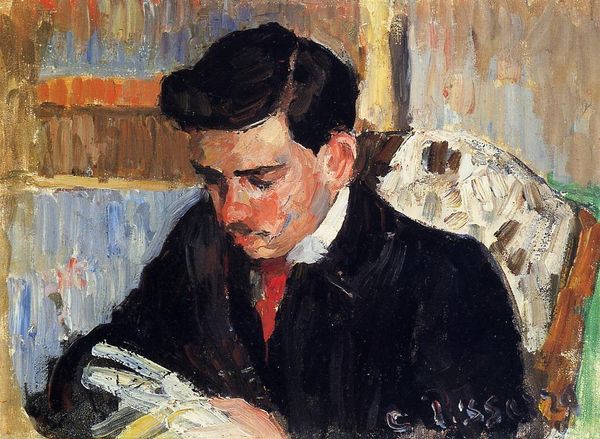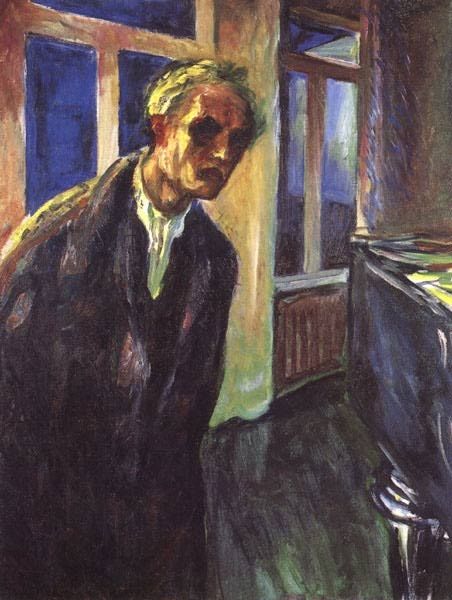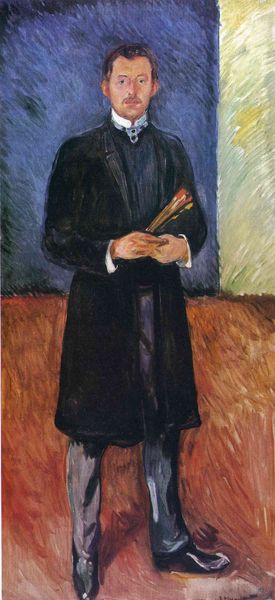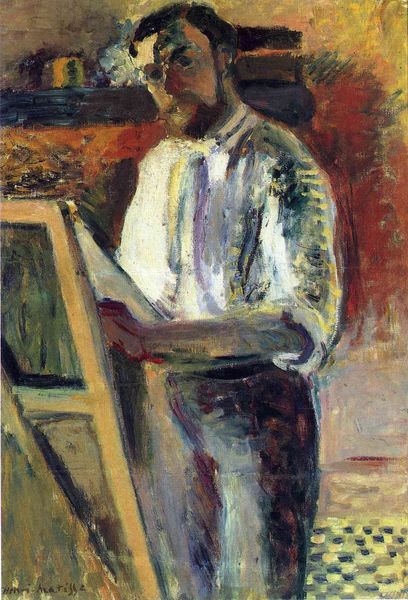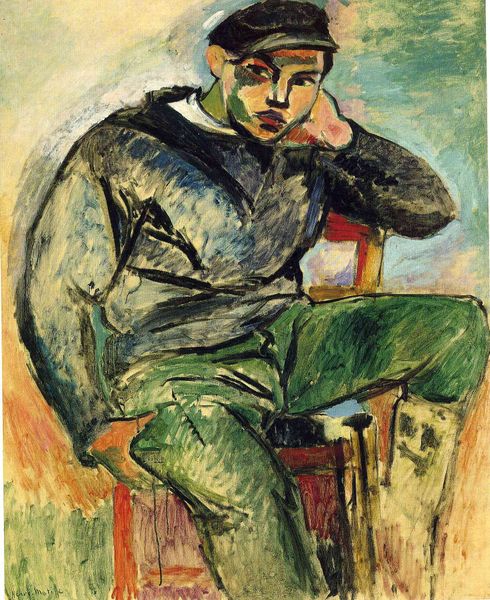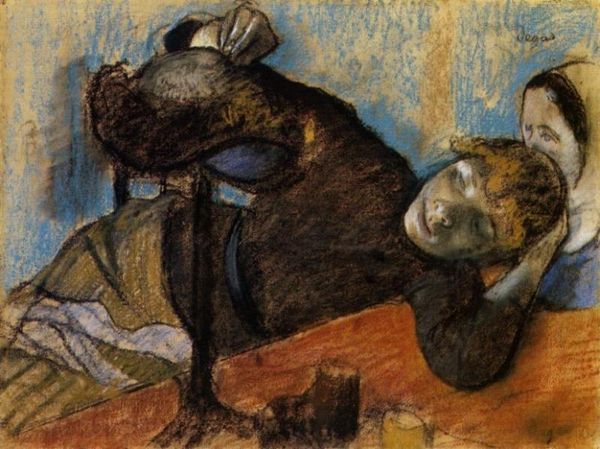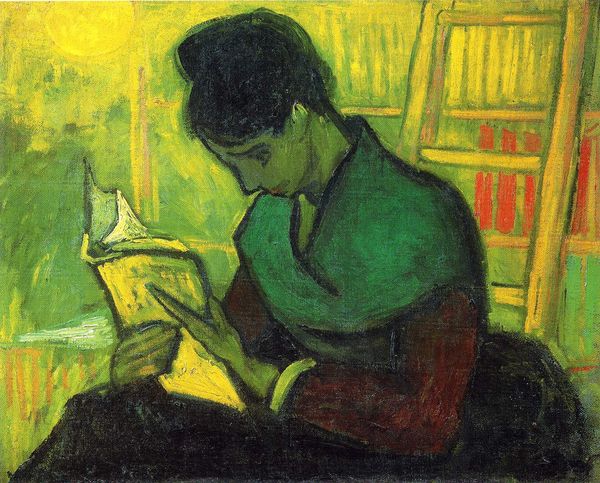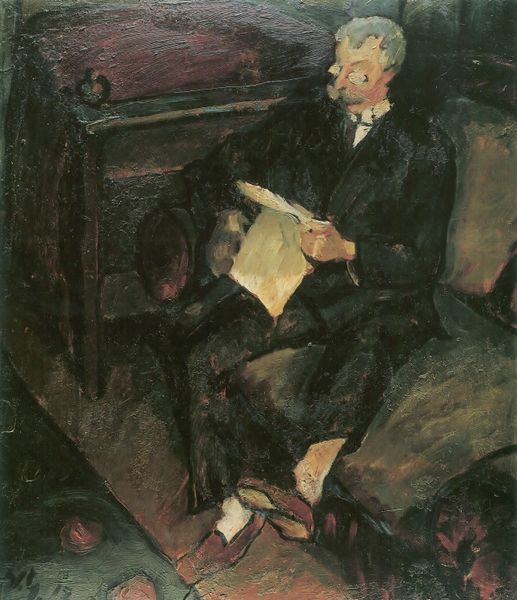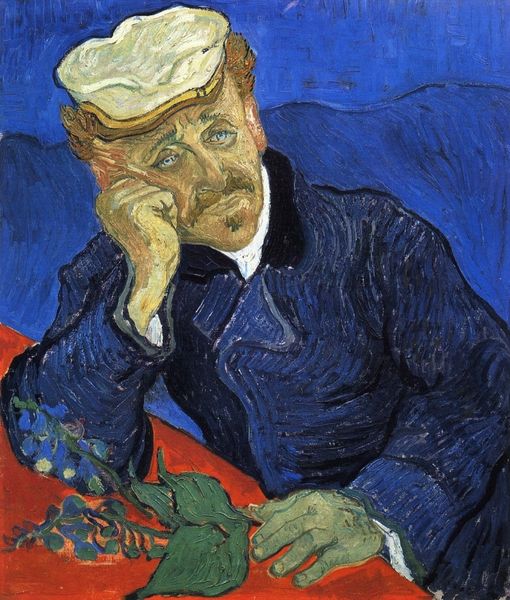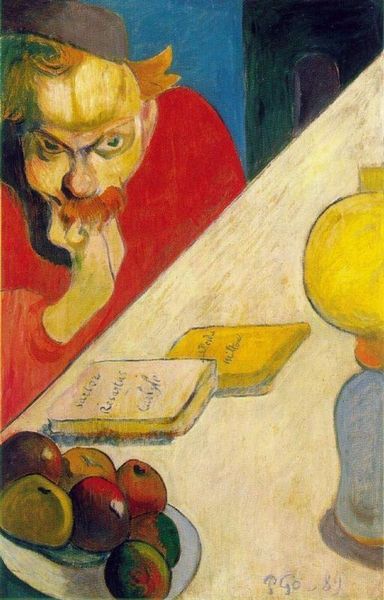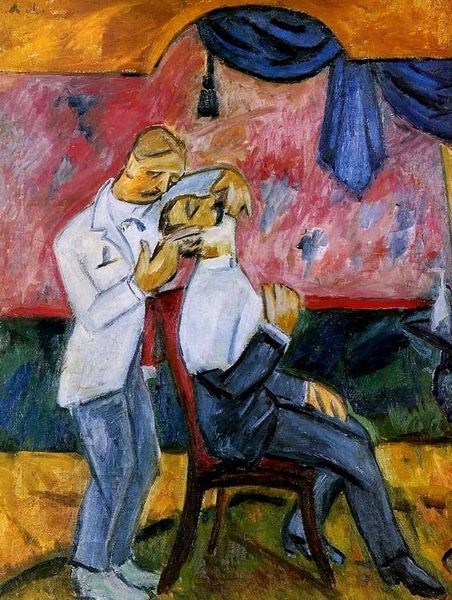
painting, oil-paint
#
portrait
#
painting
#
oil-paint
#
oil painting
#
vanitas
#
momento-mori
#
symbolism
#
portrait drawing
#
history-painting
#
post-impressionism
#
academic-art
#
portrait art
Dimensions: 130 x 97.5 cm
Copyright: Public domain
Paul Cézanne’s oil on canvas, “Young Man and Skull”, now at the Barnes Foundation, presents us with a scene steeped in the tradition of “memento mori”. During a period of immense social change and questioning of traditional values, the late 19th century was fertile ground for reflecting on mortality. Cézanne, living through the rise of industrialization, rapid urbanization, and political upheaval, channels this sense of uncertainty in this still life. The young man, rendered with Cézanne’s characteristic brushstrokes, rests his head in contemplation next to a skull – a stark reminder of death's inevitability. Consider the symbolism: the skull, often interpreted as a symbol of vanitas, sits alongside tokens of erudition and intellectual pursuit. What statement is Cézanne making about human ambition and the fleeting nature of life? How does the artist challenge traditional notions of masculinity? In his own words, Cézanne sought to show "nature in its simplest form." Cézanne invites us to meditate on the universal human condition, prompting viewers to confront their own existence.
Comments
No comments
Be the first to comment and join the conversation on the ultimate creative platform.

